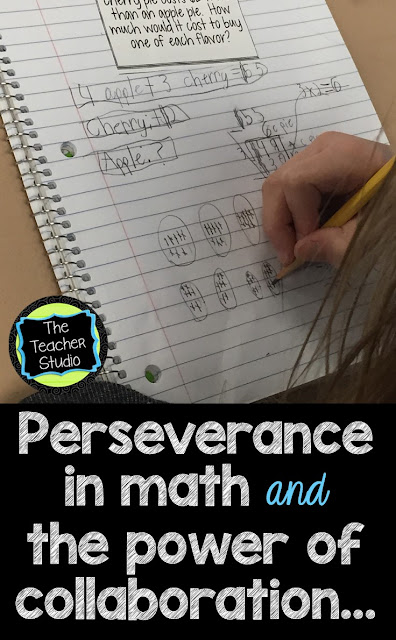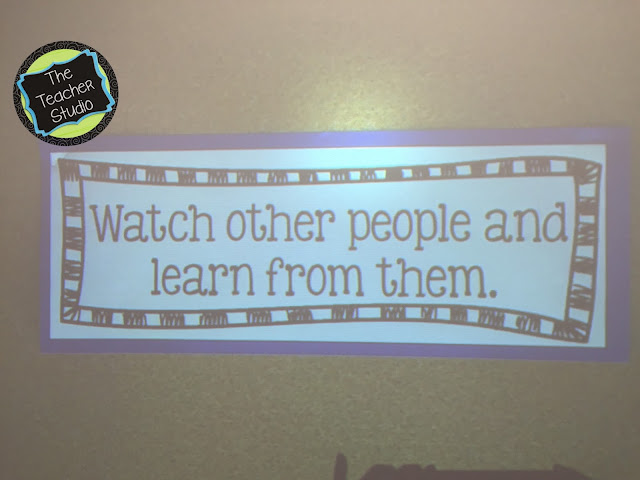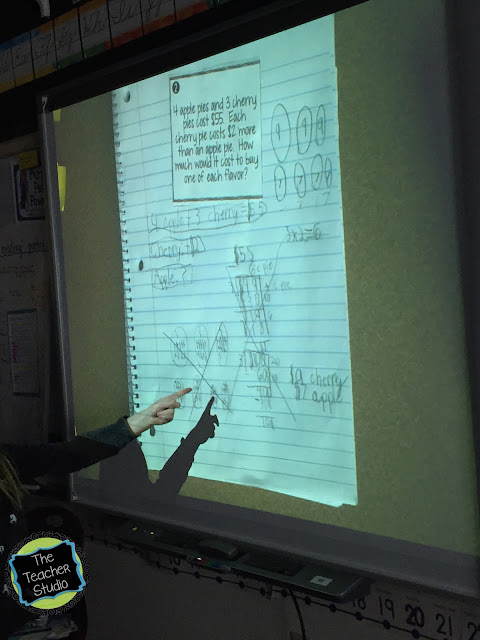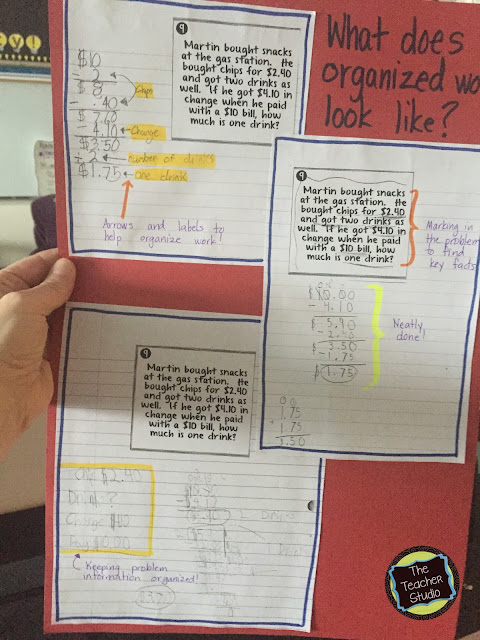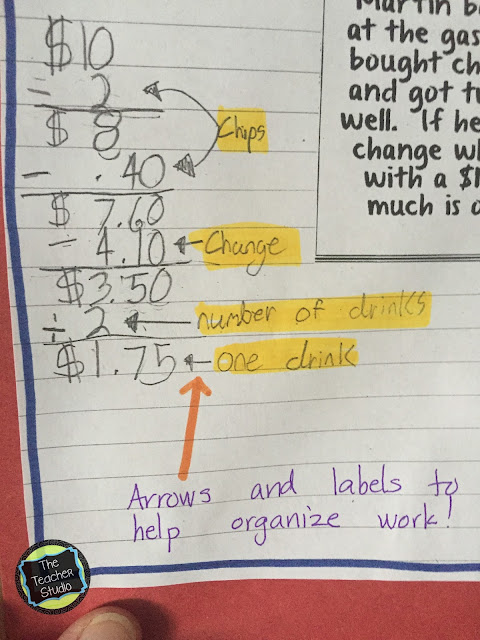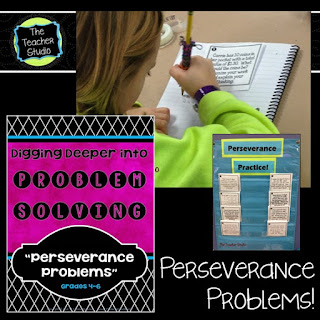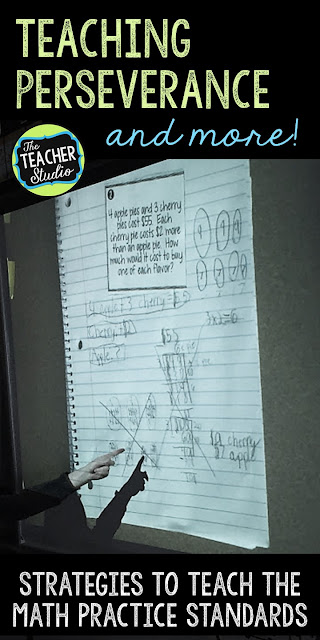After a few weeks off from school, I noticed that we were missing a little “spark” in math class…students seemed flat…a little “out of practice” with all our work of collaborating and talking about math. I decided it was time to break out some challenge problems and to remember this phrase off our growth mindset bulletin board…
I think in our time off, some of us forgot how powerful learning from each other can be–so I decided to force the issue with a few perseverance problems as warm ups…problems I knew they wouldn’t get right away–and certainly would need to struggle with a bit. I was even hoping that we could find all sorts of mistakes and different ways to organize our work–and I wasn’t disappointed!
Problem Solving Strategies!
I first asked students to read the problem BY THEMSELVES. I reviewed some of our problem solving “tips” we have worked on all year…and then asked them to work completely alone for a while. Some students dug in right away…others were obviously stumped on how to even get started. I gently reminded them of our first few steps with challenging problems.
1. Read the problem slowly. Read it again. Read it more if necessary.
2. Underline important information.
3. Find the question and make sure you understand it.
This reminder DID get a few more students “unstuck” and I heard more pencils scratching across notebooks. I waited a little bit longer and then invited those who were still stuck to join me in the hall for “emergency coaching”. I had a half dozen or so students join me and I gathered them together.
I first checked to make sure they had done the three first steps and they all assured me that they had. I reminded them of one of our next problem solving tips–draw a sketch and add labels. I asked them what in this problem could be drawn (the pies) and what labels could be attached (cherry and apple) and sent them on their way.
Now after my students had worked for 10 minutes or so, I gave them them option of continuing on their own or to start to collaborate and the healthy buzz of math started filling the room. Some who had good starts just kept working. Others eagerly buddied up and compared notes.
Math Collaboration and Math Talk
After a few minutes of working, I reminded students about the beauty of working together is to learn together–and to remember to ask questions when things are confusing and to make kind suggestions when things aren’t going well. I gave my 5 minute warning, reminded them that problem solving is a verb–and if I wanted “answer getting” I would just show them how to do it. This is such a culture change for some of them….we OFTEN don’t finish problems to completion, but today enough students finished that we had plenty to talk about–and learn from.
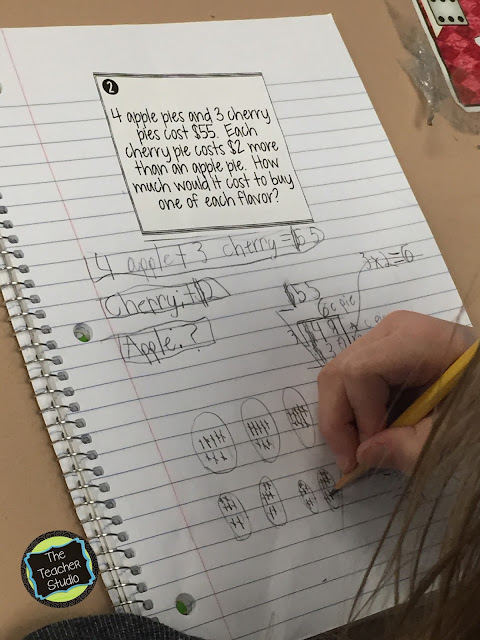
I asked for a few volunteers to share…not their answer, but their thinking. Three students shared their work. One who solved it quickly and very algebraically. I looked at the vacant looks as he shared, and I could tell his math was just way over their heads…but he DID have the correct answer. The second student DID have the correct answer but was brave enough to share that it took her THREE different tries to figure it out–and that it was the hint from a student in her desk group that unlocked it for her. As she explained her three tries, I heard murmurs in the group like, “That’s what I did too!” and “That’s the part I didn’t get!”. I reminded students about how powerful learning from others can be and flipped that card back under the projector.
Finally, my last students shared and she admitted that she never DID get the answer–and wanted help figuring out where she went wrong. It was SO much fun listening to the other students try to coach her along…until that light bulb went off!
Modeling Quality Math Work
So after we finished, I took some samples from pages I had noticed, made photocopies, and highlighted some of the other “organizational tips” that we could also learn from! This is the third time we’ve done this so far this year, and it is SO reinforcing to those students who are working to improve their organization and serves as such a great anchor chart to hang up in the room. I OFTEN refer students to these charts to look for ways to improve their math work.
So–not bad for a 30 minute warm up! Our “real” lesson today was a down and dirty 15 minute minilesson–but I am pretty confident that our warm up was more meaningful!
This problem is one of the challenge problems in my “Digging Deeper into Problem Solving” resource if you are interested in checking it out!
Have a great weekend, everyone!
Want to pin this for later?


